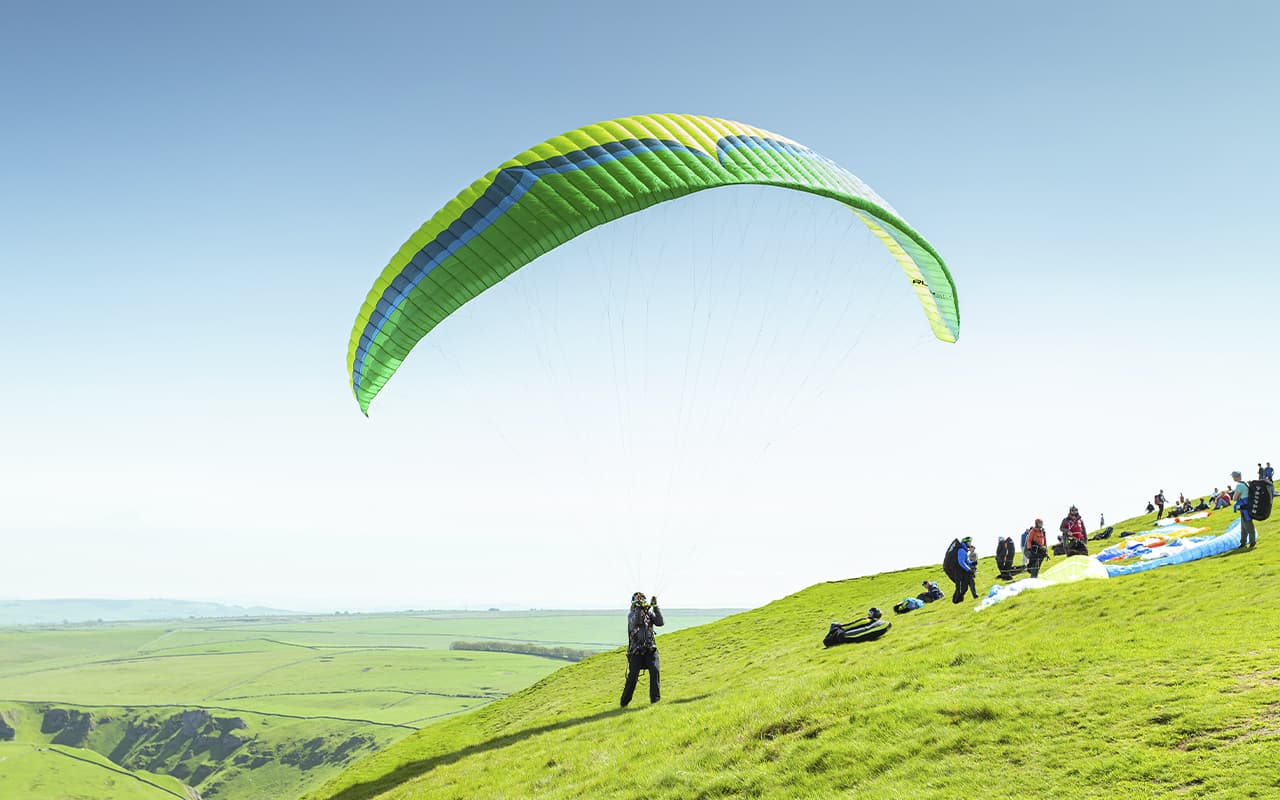Choosing a parachute is a very important task, which determines the comfort during jumps and, most importantly, the safety of the skydiver. First of all, it should meet the skydiver’s experience and the manufacturer’s recommended loading range (the ratio of the total weight in the equipment to the parachute area). The higher the load, the more maneuverable and “flyable” the canopy is, and the more altitude it loses when turning. The load can be increased very gradually: from 0.85 for students to 2.7 for elliptical pilots.
The second criterion is the tasks that the athlete sets for himself on the jumps. For dome acrobatics you need more accurate calm bags, manufacturers have special developments for wingsuit flights, for swoop you will need a high-speed model.
And the third important point is comfort, that is, the system should “sit” well on the figure, and all its elements – be freely accessible and have no external damage.
If you have the slightest doubts about how to choose a parachute before jumping, and even more so when buying one, you should seek advice from an experienced instructor.
Shapes of parachutes
The shape of the parachute “Wing” can be rectangular, semi-elliptical and elliptical.
Rectangular. This shape provides greater stability and safety for the parachute. As a rule, student parachutes are sewn in rectangular shape – for the increased area of 200-300 square feet they are called “mattresses”, parachutes for precision jumps and dome acrobatics, reserve parachutes.
Semi-elliptical. It is distinguished by a slightly elliptical leading and/or trailing edge (more often the trailing edge), and due to this gets an advantage in speed and maneuverability. But such parachutes are much more demanding on pilot’s skills and are prohibited for use by beginners.
Ellipse. It has a pronounced elliptical leading and trailing edge. This design gives the parachute very high flight characteristics and helps to develop decent speed and maximum maneuverability. High-speed ellipses are designed for use by skydivers with at least 500 jumps.
Main parachutes come in different sizes: from 500 square feet for the largest tandems to 37 square meters – with such a “handkerchief” in 2008 set a world record for piloting and landing the dome JVX-37 Brazilian skydiver Luigi Cani. Sizes between 150 and 90 square feet are considered the most workable for athletes.
Regardless of shape, any wing-type dome is highly controllable. To control the parachute, athletes use special pins: if you pull the left one, the dome will turn to the left, the right one – to the right, and with a slight loss of altitude. And if both control slings are pressed vigorously right before landing, the parachute will land softly on the athlete’s feet. This technique is called “cushion”.
